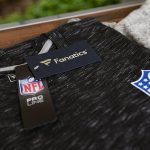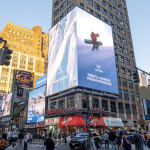Looking ahead at the upcoming paddlesports season is a lot like running a river for the first time. Even if you think you know what lies ahead, you’re never sure until you round the corner for yourself.
That’s the sentiment shared by most in the paddlesports industry this year over uncertainty regarding consumer sentiment after a tumultuous 2009. Manufacturers don’t know how retailers will react, and retailers are in limbo as to how customers will spend — a whirlpool, if you will, of uncertainty. One thing everyone does know: in the past year, manufacturers have downsized, retailers have shuttered doors and consumer spending has slowed to a trickle of what it was in the sport’s heyday.
According to Outdoor Industry Association, paddlesports sales were down 8% for the year-to-date ended October, marking the biggest drop in recent memory. Participation levels seem to support this — at least for the most recent numbers for 2008 — before the economic collapse. A new report by OIA shows that nearly 18 million Americans paddled in 2008, be it kayaking, canoeing or rafting. In all, 17.8 million Americans ages 6 and older participated at some point during the year, making 174 million outings, or 10 days per participant. Overall, these numbers show a “general upwards tick,” says The Outdoor Industry Foundation’s Bryan Mahler, increasing from 4.7% of the age 6 and over population in 2006 to 6.3% in 2007 and 6.4% in 2008.
But participation doesn’t always mean sales, many analysts caution, especially for those who are content to break the old canoe out of the garage or many paddlers — like snow skiers — may be holding off on a boat purchase in favor of more rental activity for this year.
Like rivers, the outlook for spring is still murky.
The vision of those on the front lines is just as cloudy. “Everyone seems cautiously optimistic,” said Johnson Watercraft’s Sara Knies, adding that the company is tracking on budget halfway through the first fiscal quarter. “My gut feeling is that people still want to participate, but not everyone’s rushing out to buy a canoe when they have to pay the light bulb bill.”
“So much depends on the economy and where people are located,” said Andy Zimmerman, CEO of Legacy Paddlesports. “People are wanting to be more positive, but my own crystal ball has been worn down to a marble.”
Like rivers, the outlook for spring is still murky.
The vision of those on the front lines is just as cloudy. “Everyone seems cautiously optimistic,” said Johnson Watercraft’s Sara Knies, adding that the company is tracking on budget halfway through the first fiscal quarter. “My gut feeling is that people still want to participate, but not everyone’s rushing out to buy a canoe when they have to pay the light bulb bill.”
“So much depends on the economy and where people are located,” said Andy Zimmerman, CEO of Legacy Paddlesports. “People are wanting to be more positive, but my own crystal ball has been worn down to a marble.”
Perhaps no better barometer of the industry exists than that of paddlesports’ Big Three — Johnson Outdoors, Confluence and Legacy — which together own more than 16 brands in a relatively small industry.
Following a rather tumultuous year in which it saw layoffs, the closing of its Ferndale, WA, plant and consolidation of its U.S. watercraft operations in a new 136,000-square-foot facility in Old Town, ME, Johnson says it is back on solid footing heading into 2010. “We’ve made all the moves we needed to make,” says Scott Forristall, director of Johnson’s Watercraft Business Unit. “Our business is right.”
Following a rather tumultuous year in which it saw layoffs, the closing of its Ferndale, WA, plant and consolidation of its U.S. watercraft operations in a new 136,000-square-foot facility in Old Town, ME, Johnson says it is back on solid footing heading into 2010. “We’ve made all the moves we needed to make,” says Scott Forristall, director of Johnson’s Watercraft Business Unit. “Our business is right.”
While the company reported fourth quarter watercraft sales down 31%, he says pre-season orders are flat to slightly down, with the company planning for similar sales this year. Still, the consolidation is expected to result in annual cost-savings of more than $4 million, and the company is better prepared for whatever 2010 may bring. The transition of all manufacturing to Old Town is complete, and Johnson Outdoors now has its largest production capacity ever and is better able to meet orders.
Forristall adds that like its retailers, Johnson is also paying better attention to inventory levels. “We went into last season with a tremendous amount of inventory,” he says, adding that 20% of it was outdated. “But we got it all sold off and now have the cleanest inventory level we’ve ever had. We probably have less than 200 obsolete boats, where in the past that would have been in the thousands.”
Forristall adds that like its retailers, Johnson is also paying better attention to inventory levels. “We went into last season with a tremendous amount of inventory,” he says, adding that 20% of it was outdated. “But we got it all sold off and now have the cleanest inventory level we’ve ever had. We probably have less than 200 obsolete boats, where in the past that would have been in the thousands.”
Johnson also offered consumers mail-in rebates of up to $100 with the purchase of a boat, and incentives at consumer shows. “We’ve done other things before, but never as aggressively as we did this year,” says Forristall. “If there wasn’t a promotion or discount, consumers weren’t interested in it.”
The company also helped certain dealers financially by taking boats back and even trucking in boats they could sell to mitigate debt loads. “In instances where credit departments were going to shut someone down, we went out of our way to help certain dealers,” he says. “We’ve worked with dealers before, but never at this level.”
Despite signs saying that the market has bottomed out and is starting to turn, he says the industry isn’t out of the woods yet and that the season’s true colors won’t be known until the first few months of 2010.
Legacy’s Zimmerman says that his brands’ pre-season orders were “about what we expected,” though one can only surmise what those expectations were.
Despite signs saying that the market has bottomed out and is starting to turn, he says the industry isn’t out of the woods yet and that the season’s true colors won’t be known until the first few months of 2010.
Legacy’s Zimmerman says that his brands’ pre-season orders were “about what we expected,” though one can only surmise what those expectations were.
“We’ve gotten our share, but everyone’s challenged this year,” he says, adding that they’ve streamlined operations and are managing their business better. “Everyone’s leaner and meaner. Those that do a good job managing their inventories and cash flow are the ones that are going to succeed. Manufacturers are trying not to have huge inventories and have to blow out product,” he adds. “It all comes down to managing inventories and communicating to dealers.”
Like Johnson, Legacy did what it could to help retailers succeed. Only it had to take a more curtailed approach. “We helped our dealers however we could, from attending shows to hosting demos,” he says. “But we didn’t jump into the rebate program like some of the others. We decided, ‘Damned if you do, damned if you don’t.’ But we encouraged our dealers only to buy what they thought they could sell-through. We don’t want anyone to be over-inventoried.”
While not bullish on the market, Confluence, arguably the biggest player in paddlesports with Perception, Dagger, Wave Sport, Wilderness Systems, Mad River Canoes, Harmony and AT paddles under its umbrella, is at least treading water in terms of sales.
“We’re holding our own,” says CEO Sue Rechner. “Our pre-seasons are ever-so-slightly ahead of last year’s, which I think is a good sign. I’m feeling positive about being ahead of last year.”
Admitting that this year the “whole prospect of pre-season is a bit of a bone of contention with retailers,” she says that many retailers are opting to place their orders more in-season this go-around. And while that places additional delivery pressure on manufacturers, the ones that do well will be those that can adapt to this new supply timing. “A lot of lessons were learned last year about how much inventory to carry,” she says. “But there’s a fine line between over-inventory and losing sales.”
This year, she adds, retailers are making very careful and methodical business decisions. The good ones are also reaching out to a broader consumer audience with as many touch points as they can have, be it educational seminars or demos. Case in point: a consumer outreach event Confluence staged with EMS in New York City this summer.
“It’s important in times like this to remain flexible, and be able to respond immediately to trends,” she says. “We have that capability, so our retailers can meet consumer demand at the time.”
In a normal year, she adds, retailers and manufacturers have three to four months to respond to consumer demand. But now it’s been thrust into turbo drive. “The business is changing, and people have to adapt,” she says. Despite all this, Rechner feels there’s a sense that the worst is behind and that people are going into the season with more confidence. “We saw some erosion in 2009, but paddlesports has grown constantly and I think it will continue to grow,” she says.
No one can deny that it was a hard year on retailers. But those that survived are the ones that made adjustments early. “We looked at where our best margins were and focused on the products that have been working,” says Tyler Donaldson, e-commerce manager for the Nantahala Outdoor Center. “We’ve had to concentrate on our core, both from a customer and vendor standpoint.”
As testament to its formula, especially in these trying times, NOC is opening a new 17,000-square-foot retail store for 2010 in Gatlinburg, TN, to tap the 11 million annual tourists visiting Great Smoky Mountains National Park. “It’s a different market, so we plan to push a variety of adventure activities,” says Donaldson, adding that retail-wise, it will offer a slimmed-down version of what it sells at the main NOC store in Bryson City, NC.
The company is well aware that this comes at a time when the economy is forcing others to close. “If that wasn’t on our minds, we wouldn’t be doing a good job,” says Donaldson, adding that NOC is also re-launching its e-commerce operations. “But we’ve always done paddlesports retail and believe we’ll continue to be successful.”
Rutabaga, based in Madison WI, also enjoyed a relatively successful year. “We did what you should do every year,” says owner Darren Bush, who’s predicting a 12% increase in 2010 over 2009’s flat sales. “We watched our expenses, sales and our inventory.” Adding that everyone should look at ways to reduce inventory exposure, Bush notes that some categories like clothing, racks and fishing kayaks were up while others were down. But he also admits to learning. “We made a few stupid mistakes early in 2009 by carrying too much in a category that did really well before,” he says. “But it was nothing fatal.”
Rutabaga, based in Madison WI, also enjoyed a relatively successful year. “We did what you should do every year,” says owner Darren Bush, who’s predicting a 12% increase in 2010 over 2009’s flat sales. “We watched our expenses, sales and our inventory.” Adding that everyone should look at ways to reduce inventory exposure, Bush notes that some categories like clothing, racks and fishing kayaks were up while others were down. But he also admits to learning. “We made a few stupid mistakes early in 2009 by carrying too much in a category that did really well before,” he says. “But it was nothing fatal.”
Rutabaga is also staying proactive on the event front, hosting its seventh annual Door County Sea Kayak Symposium in 2010, as well as the venerable Canoecopia event in March. It’s also introducing a Canoe Rendezvous event in September to grow interest in that category. As for what the year might bring, he says only time and location will tell.
Diversification also helps. “Paddlesports were down, but other things were up,” says Ed McAlister, owner of River Sports Outfitters, in Knoxville, TN. Bucking the trend, he says 2008’s sales were great and that 2009 was even better. He credits this to not skimping. “We didn’t cut back,” he says. “We kept our store full and offered a lot of options, and our customers appreciated that.” He also realizes the importance of reaching out to consumers.
Last summer River Sports debuted the new social Web site OutdoorKnoxville.com simply to generate interest in and facilitate outdoor activities in the area. He’s also expanding teaching clinics, hosting more demos and social paddles, and procured an overnight camping location along the French Broad River. “You need to participate and reach out to consumers outside of the store to be successful,” he says. “We make sure we have something going on two or three days a week.”
With pre-season sales in the books, the vast majority of retailers and vendors are preparing their businesses for the season ahead and an air of cautious optimism seems to be prevalent. And yet, 2009 offered a series of valuable lessons for the industry and 2010 seems to promise opportunity.














